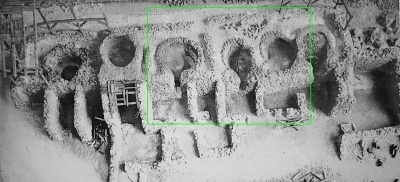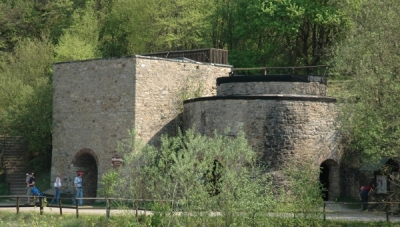

In the area south of Cologne (Köln, Germany), limestone is present in the ground, in a pure form which could be quarried easily. During construction of a ditch for water-pipes in 1966 six lime kilns from Roman times were discovered in Iversheim. Between 100 and 300 CE lime was fired in this location. The slaked lime was used as building material and was transported by barge across the river Erft. Despite its destruction during the first invasion of the Franks in 270 A.D., production was started up again, until around 300 it was suddenly stopped. See also a Geman flyer.
The Nettersheim lime kilns date back to the 19th century and were restored several years ago. Unlike the cyclical production methods of the Romans in Iversheim, in this 'modern' kiln limestone and coal are continuously poured into the top and the finished lime is extracted at the bottom through tapholes. The Limestone Quarry "Kaninhecke" is located behind the kilns and is rich in fossils, which are described on signs for visitors interested in geology.